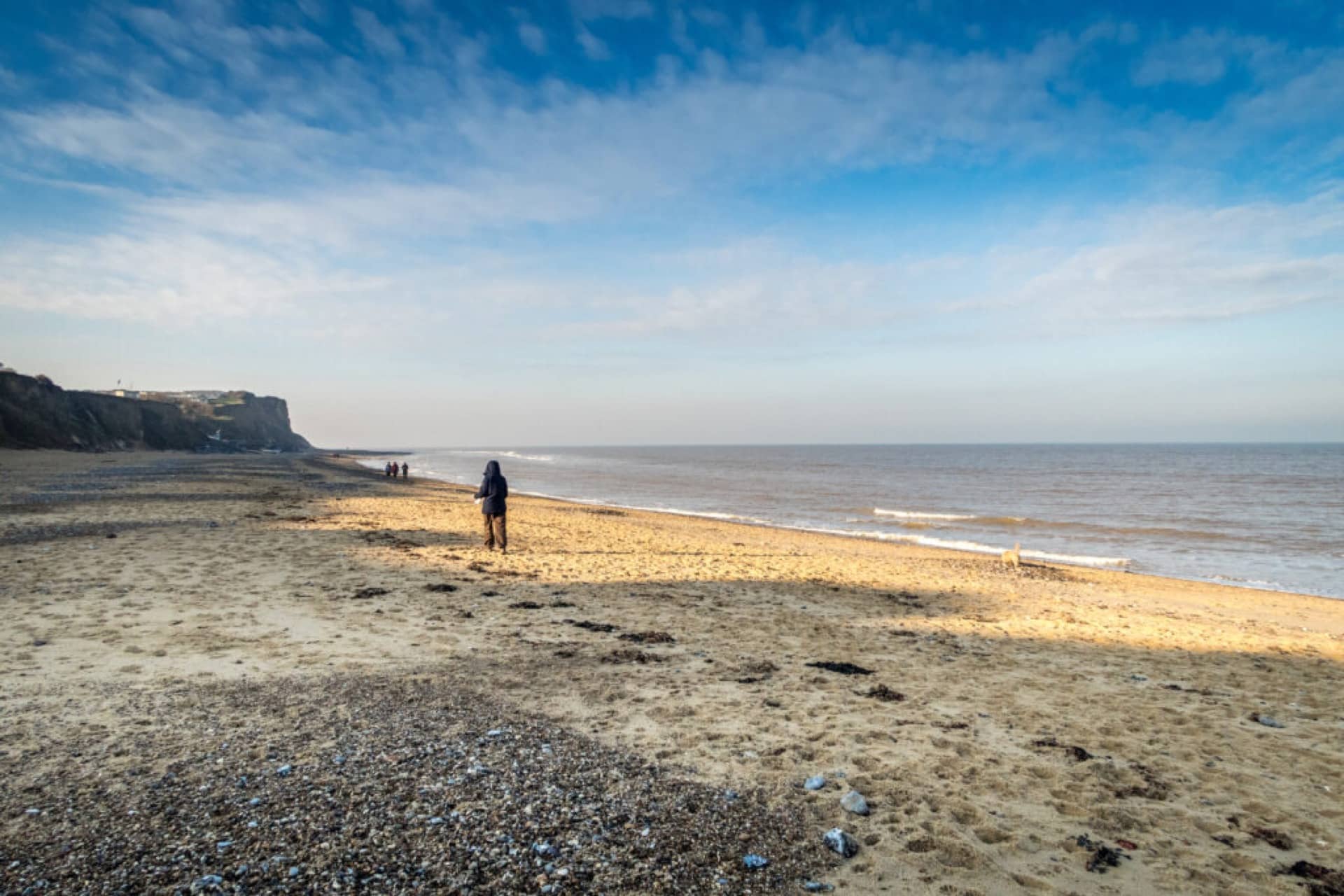
Black Shuck
It’s official, Britain is a nation of dog lovers. Unless that dog is Black Shuck! The spectral hound with a single fiery eye prowls across East Anglia, spotted everywhere from woods and lanes to coastal paths and bus stops. Midnight churchyards are a favourite haunt and Shuck seems particularly fixated on Cromer in North Norfolk – yikes!
Take a winter walk across this haunted land, as smugglers once did while nosey neighbours, terrified by their threatening tales, cowered at home by the fire. Luckily Cromer’s winding streets are full of pubs, cafés, delis and restaurants to get away from roaming phantoms, ready for a night of good food and cosy ghost stories.
Black Shuck is a spirit of the old world and the new, stalking from legend into popular imagination through films, graphic novels, video games, rock music and Sir Arthur Conan Doyle’s Sherlock Holmes story ‘The Hound of the Baskervilles’. In his 1901 ‘Highways & Byways in East Anglia’ W.A. Dutt wrote: “you will do well to shut your eyes if you hear him howling; shut them even if you are uncertain whether it is the dog fiend or the voice of the wind you hear.” A sighting is said to foreshadow misfortune, though others say Shuck guides lost travellers to safety over the marshes. Perhaps it depends if your pocket’s full of doggie treats! But just in case, if you’re passing a Norfolk churchyard at night, take local advice and don’t make eye contact with any giant hell hounds!
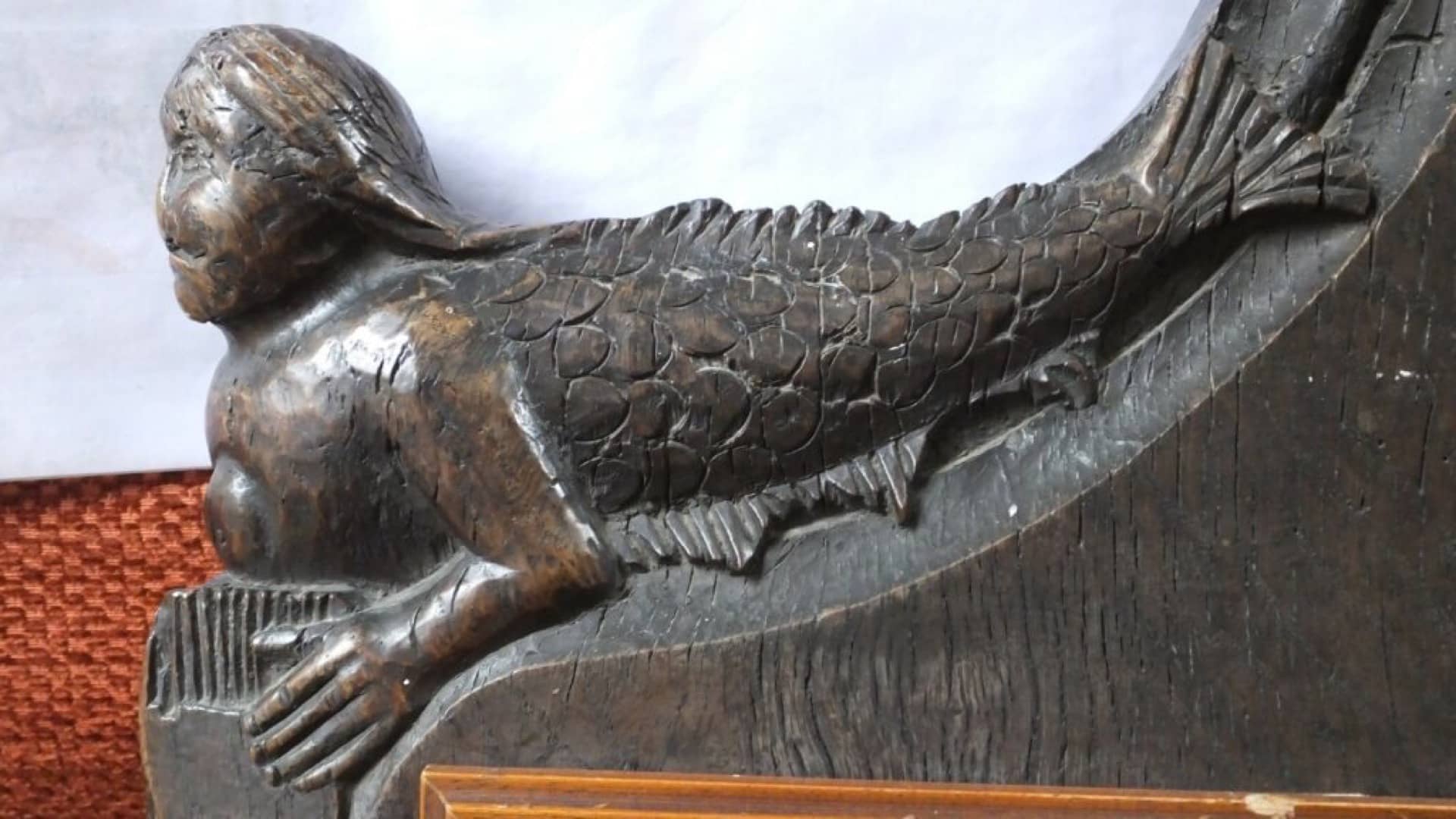
Sheringham Mermaid
On a sandbank off Sheringham, a mermaid sang to the wandering stars, forlorn and all alone. One winter night it seemed her searching voice heard an answering call. Echoing through the streets came the sweet sound of human voices raised in harmony amid cascading peals of church bells. Enchanted, she hauled herself onto the pebble beach. Her silvery fish’s tail was cumbersome in the cold air, but the singing was so beautiful she dragged her body inch by inch over the rough streets and into the church.
But these were fishing folk and mermaids are unpredictable creatures, agents of both fortune and disaster, changeable as the sea. Besides, they have no immortal soul. So the people were afraid and cast her out.
When they’d gone, she crept back into the church. And she’s there still. At All Saints in Upper Sheringham you’ll find a mermaid carved into the end of a 15th century pew. Perhaps angels took pity on the sea nymph’s lonely heart and, as wooden figureheads guide ships to harbour, they brought her safely home.
If you want to be sure of getting home safely, listen for the Yow Yows. That’s Sheringham’s term for a sudden squall, named after uncanny sounds shifting across the waves before storms strike. Some say it’s the drowned voice of an old sea captain still cursing local fishermen who let him perish. If you hear cries of eternal distress, return immediately to shore, for his warning is an omen of doom
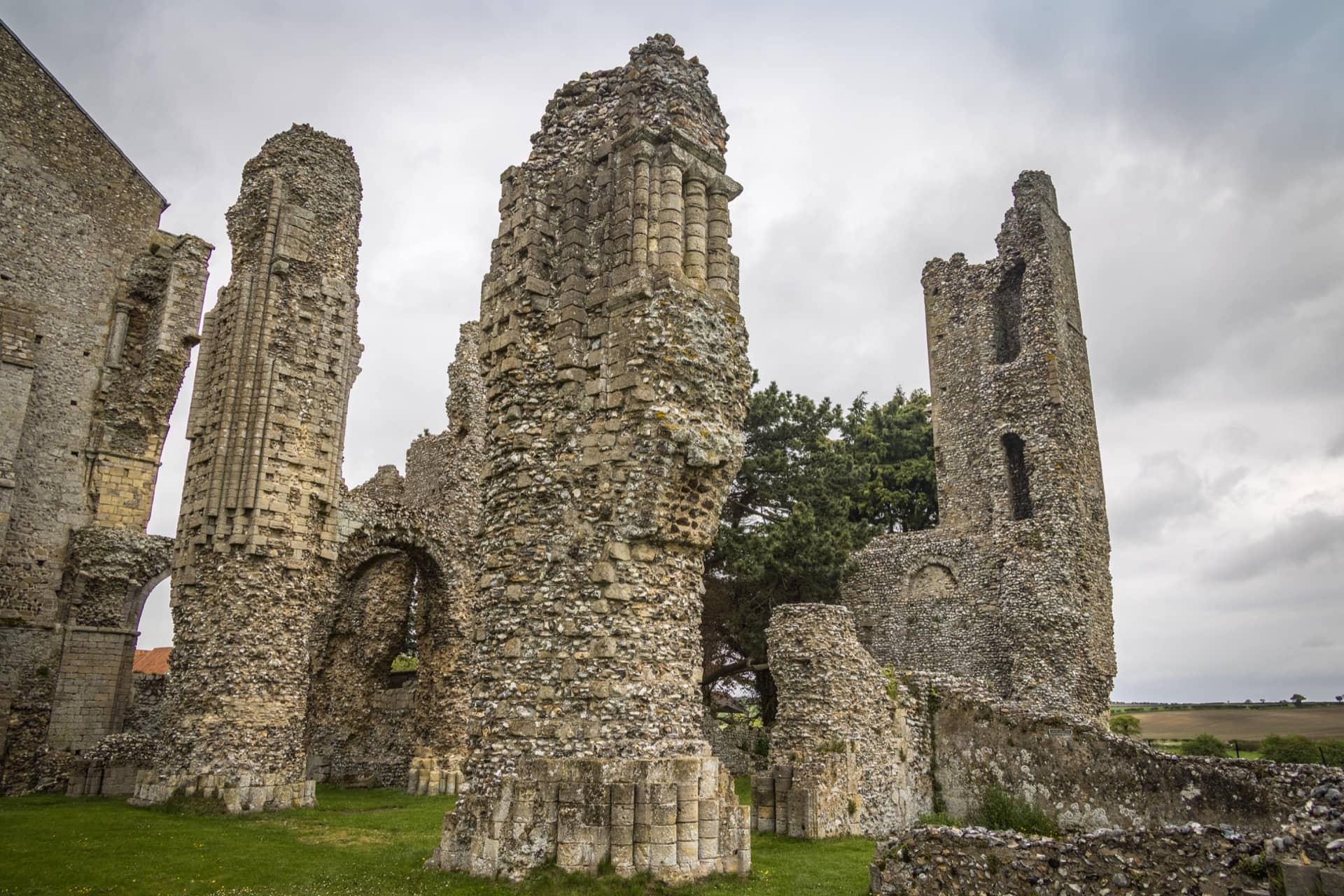
The Fiddling Ghost of Binham Priory
Listen. The wind has dropped. Evening’s soft shroud unfolds. All is held in wintry stillness. Midnight. Is that the sound of distant music? A mournful tune is coming from deep underground, an aching melody of loss and regret. For in this place only the dead are unquiet.
You’re at Binham Priory, one of Norfolk’s most magnificent ruins. Founded in 1091 by Peter des Valoines, William the Conqueror’s nephew, for 400 years it was home to a small community of Benedictine monks, led by a succession of scandalous priors. In the early 1300s, Prior William de Somerton’s obsession with alchemy plunged Binham into debt, church treasures sold off to fund occult experiments. In 1539 Henry VIII gave the monastery to Sir Thomas Paston, who pulled it apart to build a house. Demolition continued under Paston’s grandson, Edward, until falling masonry killed a workman, surely an ill omen. And so the rest fell into ruin, left to weather, time and ghosts.
A black-hooded monk has been seen emerging from a tunnel thought to join these ruins to the Walsingham shrine. And what of the haunting music? You’d hope having a dog named Trap would’ve made Jimmy Griggs think twice about striding down a crumbling old tunnel. But no! The foolhardy fellow marched in, showing off, playing his fiddle. Suddenly the music ceased. That night a great storm roared in from the sea and the tunnel caved in. Jimmy was never seen again. But you’ve heard his music, haven’t you?
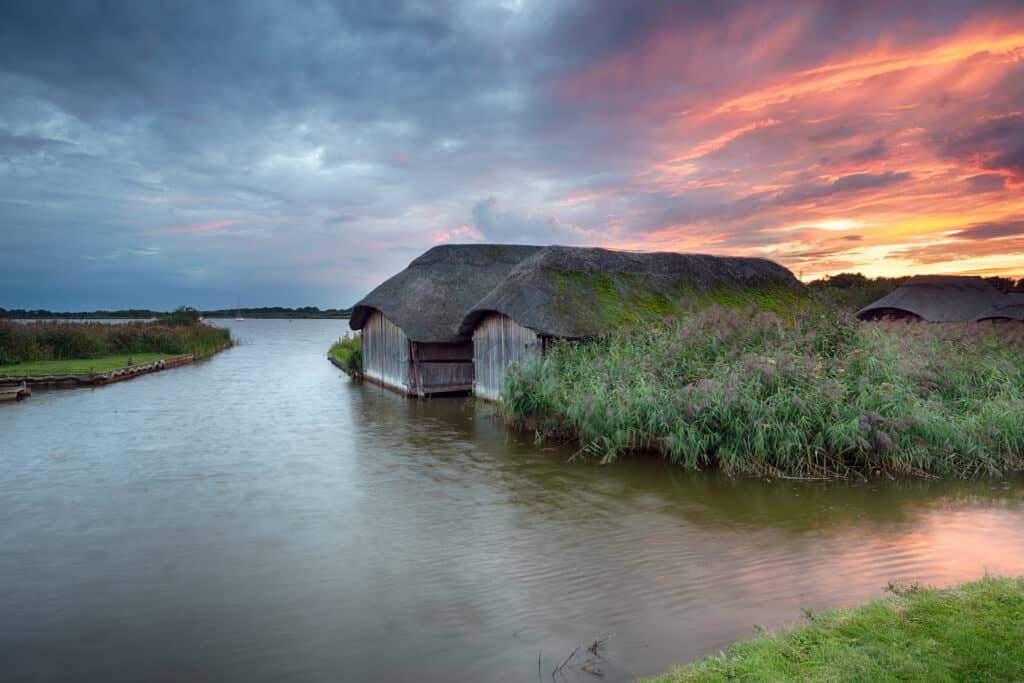
The Phantom Drummer Boy of Hickling Broad
All summer long Hickling Broad teems with holidaymakers from across the world, their pleasure boats and canoes crowding the waterways. Yet in winter the tourists leave, boatyards are shut and a wilder, elemental beauty rises like dawn mist. Pale whispering reeds sway in elegant dances, and paths and boardwalks are all yours. Boats are moored tight against wooden quays, masts clinking in easterly winds. When iron grey cold grips the landscape, the Broads freeze. Stop for a moment. In the clean air there’s the sound of a drum. Slow and steady, carried on the wind.
It’s an age old story of forbidden love. Two hundred years ago, a carefree drummer boy fell in love with a sweet natured girl. But the boy was poor and the girl’s father was rich and proud. He ordered his daughter never to see the lowly drummer boy again. But true love will not be denied so the lovers married in secret. Each night they met on the banks of the Broad. And when Arctic chill turned the water to ice, the boy would skate slowly across, beating his drum, signalling to his young wife. Wrapped against the bitter cold she waited, her heart beating in tandem with the soft rhythm of his drum. One night, the ice cracked like a gunshot. And the beat stopped forever.
Yet, on winter nights, it’s said the boy’s frozen spirit searches for her still, his drum beating for eternal love, the sound of every human heart.

Brother Pacificus Of Ranworth
Deep in the Norfolk Broads, close to where the Ant and Bure rivers meet, is the ruined Abbey of St Benet’s at Holme. It’s a remote place for peaceful souls to paint, read and watch the boats go by. Surrounded by lonely marshes, it suited the reclusive order of black-cowled monks who dwelt here for centuries. The abbey was the only religious house in England to survive Henry VIII’s Dissolution of the Monasteries, although nonetheless by 1540 the last monk had gone. All but one, who’s seen here still…
It’s said gentle Brother Pacificus was given the task of mending an ornate screen at St Helen’s church in Ranworth. At dawn he would row across Ranworth Broad to St Helen’s and at the end of each day, he would row back to the Abbey, his little dog panting eagerly at the prow. One evening he returned to find his brother monks had been savagely murdered by Henry VIII’s soldiers. Devastated Brother Pacificus lingered alone at the stricken Abbey until his death when mourning villagers laid him to rest him at St Helen’s, the church he loved so well.
Some have seen his kindly ghost rowing through the morning mist at first light and some in the haze of a quiet summer evening. Wearing his habit, he rows a small boat across the Broad, his faithful dog still by his side. Others have seen him at prayer in St Helen’s, although if you approach he fades softly into the past.
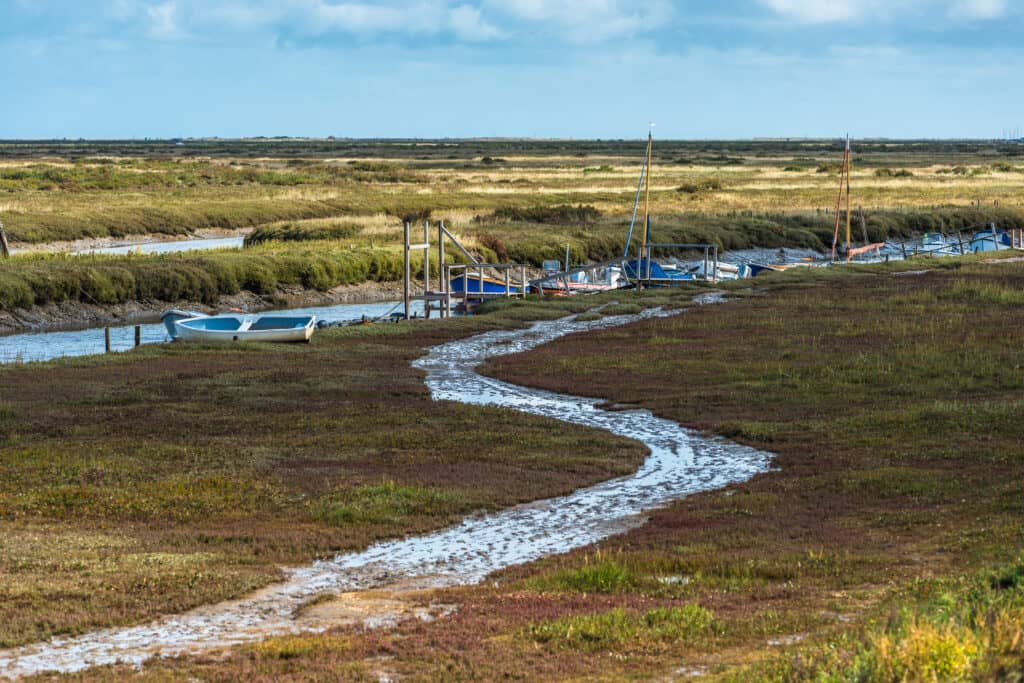
The Fairies and Hytersprites of Blakeney
In the Middle Ages, along with Wiveton and Cley, Blakeney was one of the prosperous Glaven ports, sheltered by the long sandy spit of Blakeney Point, these busy harbours jostled with ships taking sheep and salt fish to the Low Countries. And when the Spanish Armada threatened England, the Glaven ports sent 36 ships to join Drake’s fleet. Eventually silt blocked the sea channels and only small nimble craft could navigate the marsh, the kind used by smugglers. It’s said beneath Blakeney’s narrow streets where so many old fishermen’s cottages are now second homes, there’s a maze of tunnels, created by gangs who once held sway along the North Norfolk coast.
But those underground labyrinths are home to even more elusive beings. Hikey Sprites or Hyter Sprites are rare creatures who haunt woods and marshlands at dusk, peculiar to Norfolk’s strange liminal places. Described by some as spider-like, scuttling on spindly legs, by others as flying on leathery wings, it’s said they’ll suck your blood and steal away children who wander out onto the marsh after dark. Parents warn ‘if you go out alone, the hyter sprites will get you’, though there are also folk tales of hikeys bringing lost children safely home. It seems, like faeries, sprites are nothing if not unpredictable.
Stories told by smugglers to scare off prying eyes? Or fables to safeguard curious children? Dare you to find out!
Build your own itinerary
If you fancy creating your own itinerary for a day trip to Norfolk or a longer visit, it couldn’t be simpler. Just go to Search Activities and select from our wide range of free and paid-for experiences, saving any that capture your imagination with the click of a button.
Once you’ve finished, you’ll find all the information stored in My Favourite, where you can drag and drop activities to create your own day-by-day itinerary! You can download this to a calendar and even share it with friends.
